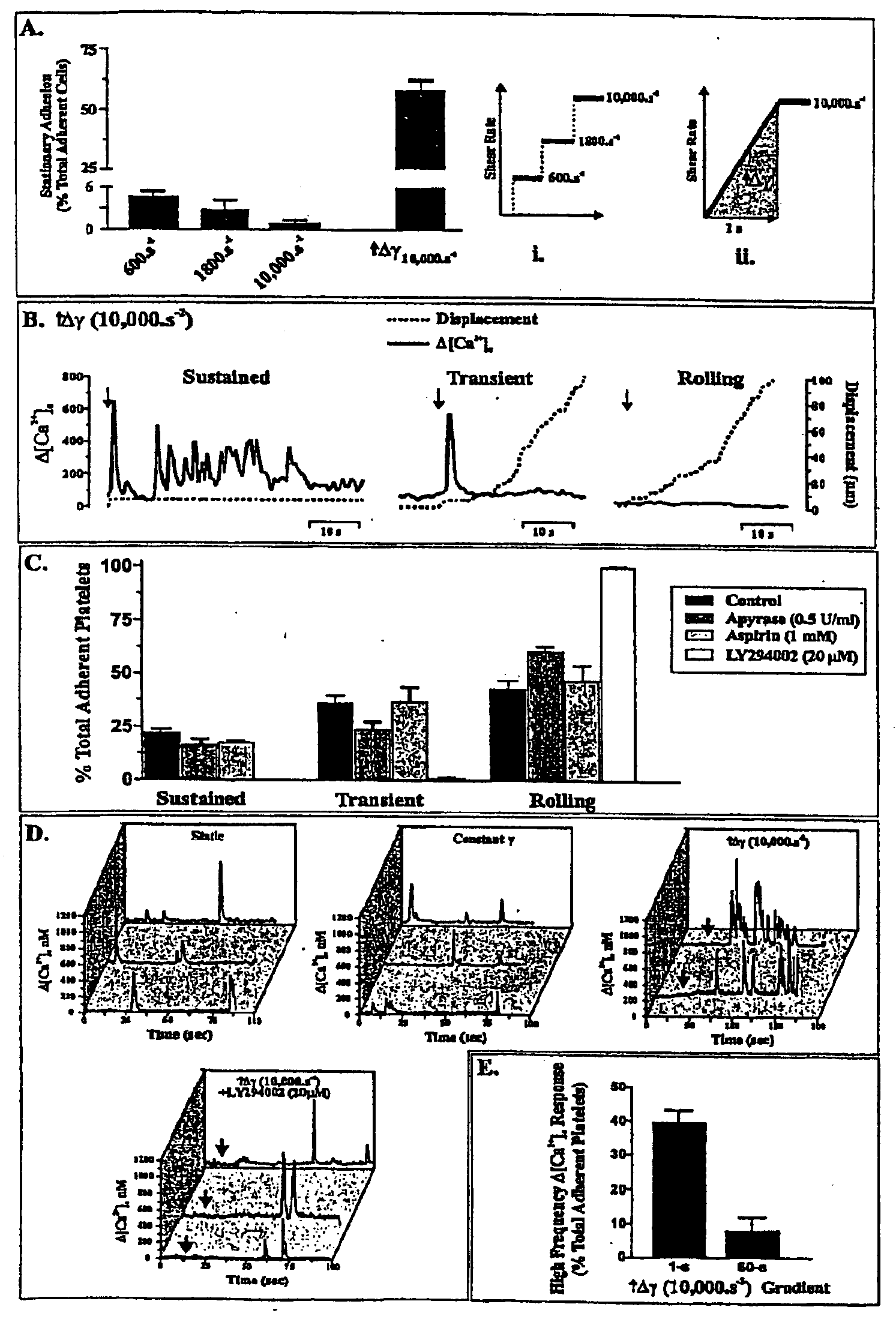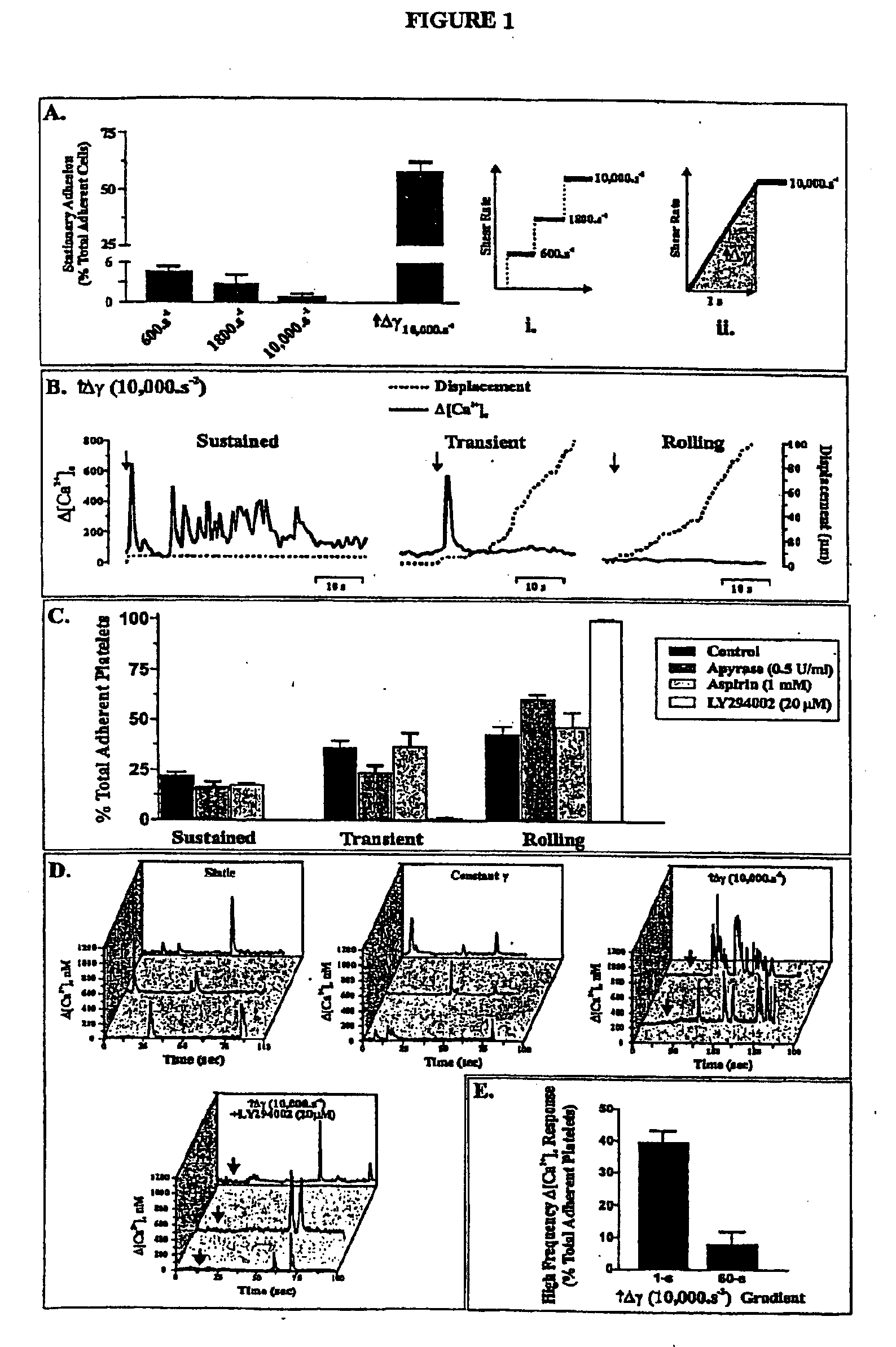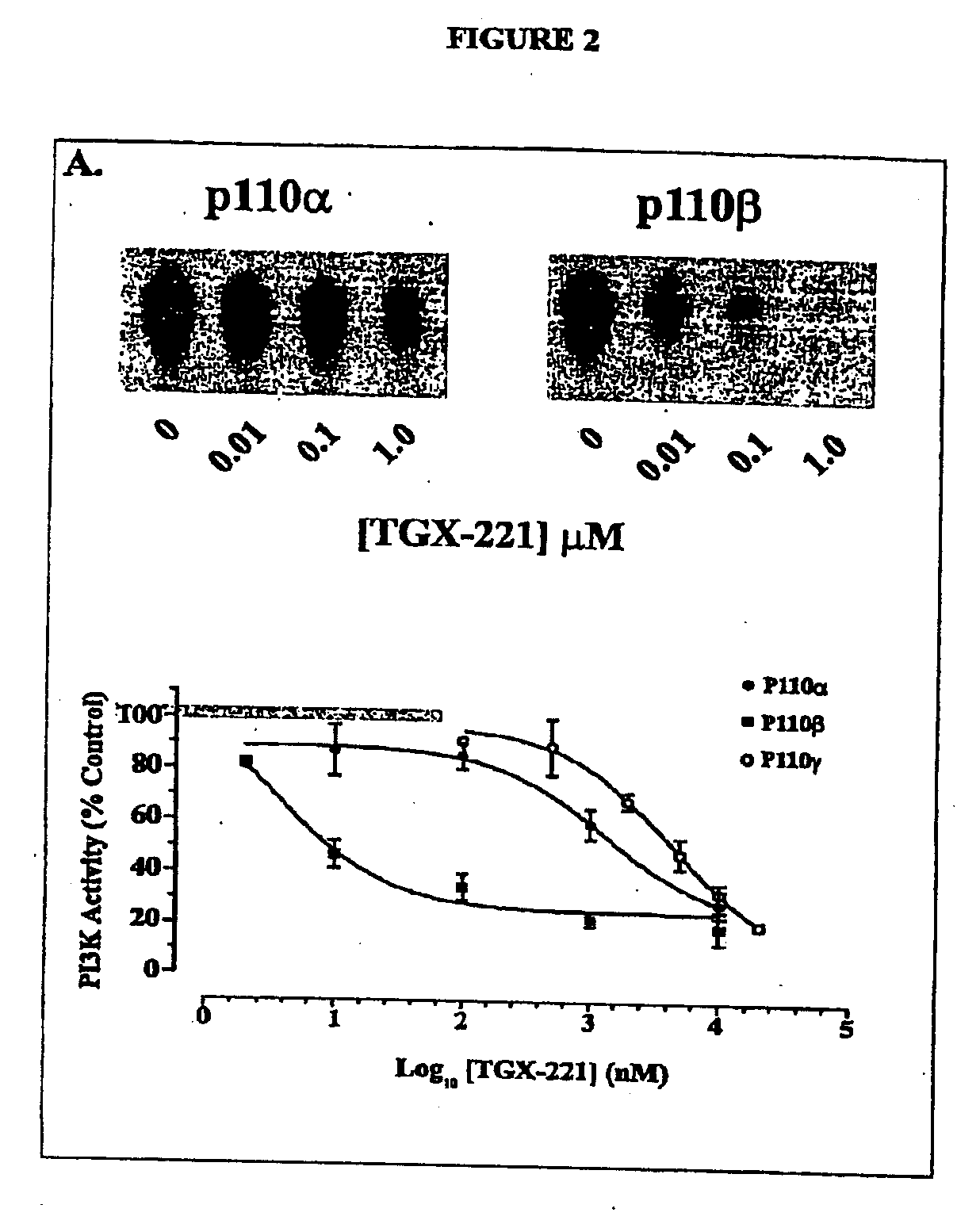Inhibition Of Phosphoinositide 3-Kinase Beta
a phosphoinositide and beta technology, applied in the field of new antithrombotic therapy and compounds, can solve the problems of vaso-occlusive platelet thrombi formation, increased risk of life-threatening illness or hemorrhage, and significant limitation of anti-coagulants and platelet inhibitors, so as to inhibit platelet activation, specific inhibition of thrombosis, and prolong bleeding time
- Summary
- Abstract
- Description
- Claims
- Application Information
AI Technical Summary
Benefits of technology
Problems solved by technology
Method used
Image
Examples
synthesis examples
Example 1
Synthesis of (±)-7-methyl-2-morpholin-4-yl-9-(1-phenylaminoethyl)-pyrido[1,2-a]-pyrimidin-4-one (TGX-221: R1=CH3, R2=CH3, R3=H)
[0179]
[0180]Compound 2: To a solution of 2-amino-3-bromo-5-methylpyridine (1) (45 g, 0.24 mol) in dichloromethane (500 mL) was added malonyl dichloride (25 mL, 0.25 mol) at ice-cold temperature. The mixture was then stirred at ambient temperature for 48 h. The precipitated light yellow solids were collected by filtration, washed with dichloromethane (3×100 mL) and dried under vacuum to afford product 2 (52.5 g). The filtrate was concentrated under reduced pressure. The resulting residue was suspended in H2O and stirred for 1 h. The solution was filtered and the filtrate was neutralized with solid NaHCO3 to give unreacted 2-amino-3-bromo-5-methylpyridine (6 g). The crude compound 2 was taken to next synthetic step without further purification. 1H NNR (300 MHz, DMSO-d6) δ 8.72 (s, 1H), 8.28 (s, 1H), 5.50 (s, 1H), 2.33 (s, 3H).
[0181]Compound 3: To a su...
example 2a
6-methyl-8-acetyl-2-(4-pyridinyl)-4H-1-benzopyran-4-one
[0188]
3′-acetyl-2′-hydroxy-5′-methylacetophenone
[0189]A mixture of 2-hydroxy-5-methylacetophenone (15 g, 0.1 mol) in dichloromethane (100 ml) was treated with triethylamine (13.9 ml), dimethaminopyridine (1.22 g) and acetic anhydride (9.5 ml) and stirred at room temperature overnight. The mixture was then poured into water (300 ml) and extracted with dichloromethane (3×60 ml). The combined extracts were washed with sat. aq. NaHCO3, dried (Na2SO4) and the solvent removed to yield a colourless oil (19.5 g)
[0190]This product was dissolved in dichloromethane (200 ml) at 0° C. and treated with aluminium chloride (19.5 g) and stirred at room temperature for 5 days. The solution was treated with ice (50 g) and 2N hydrochloric acid (50 ml) and stirred at room temperature for 1 h. The dichloromethane layer was separated and the aqueous layer extracted with dichloromethane (2×60 ml). The combine extracts were washed with sat. aq. NaCl, dr...
example 2b
Heck Coupling of Bromo-Chromone
8-acetyl-6-methyl-2-(4-pyridinyl)-4H-1-benzopyran-4-one (Alternate Method)
[0204]
6-methyl-8-(acetyl)-2-(4-pyridinyl)-4H-1-benzopyran-4-one
[0205]A mixture of 8-bromo-2-(4-pyridinyl)-6-methyl-4H-1-benzopyran-4-one (0.12 g, 0.36 mmol), n-butyl vinyl ether (0.047 ml, 0.36 mmol), triethylamine (0.050 ml, 0.36 mmol) in DMF (5 ml) was purged with N2 and then treated with PdCl2(dppf) (27 mg, 0.036 mmol). The mixture was heated to 90° C. overnight. The mixture was cooled to room temperature and treated with 1N aqueous HCl (30 ml) and stirring was continued overnight. The mixture was then diluted with water (50 ml), and lyophilized to dryness. The residue was eluted through a C8-HPLC column and the product isolated as an off-white solid (2.5 mg). The product was identical to that described above.
PUM
| Property | Measurement | Unit |
|---|---|---|
| temperature | aaaaa | aaaaa |
| pH | aaaaa | aaaaa |
| pH | aaaaa | aaaaa |
Abstract
Description
Claims
Application Information
 Login to View More
Login to View More - R&D
- Intellectual Property
- Life Sciences
- Materials
- Tech Scout
- Unparalleled Data Quality
- Higher Quality Content
- 60% Fewer Hallucinations
Browse by: Latest US Patents, China's latest patents, Technical Efficacy Thesaurus, Application Domain, Technology Topic, Popular Technical Reports.
© 2025 PatSnap. All rights reserved.Legal|Privacy policy|Modern Slavery Act Transparency Statement|Sitemap|About US| Contact US: help@patsnap.com



